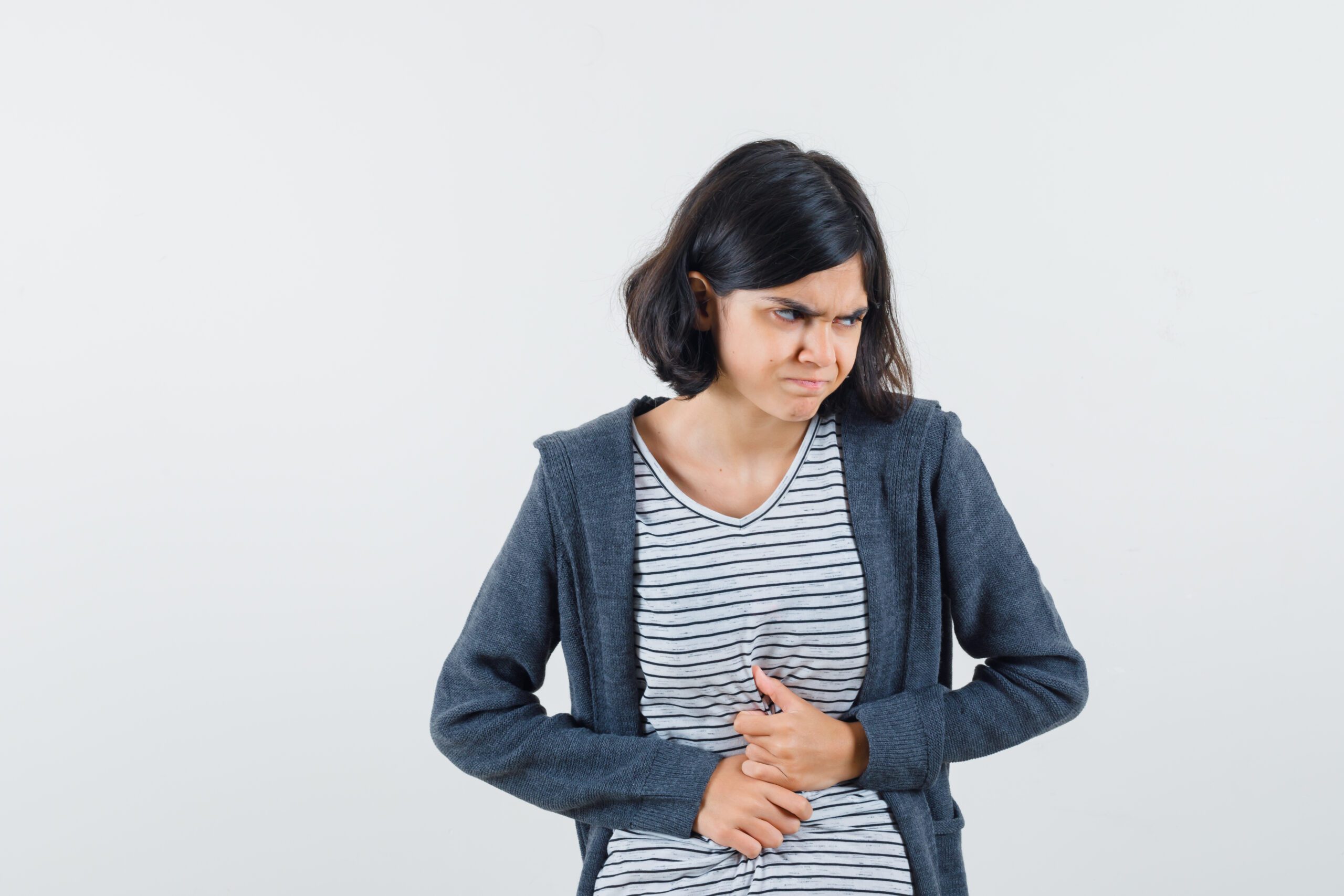
Abdominal pain, especially in the lower left quadrant, can be a cause for concern, often indicating underlying health issues. Understanding the anatomy and potential causes of lower left abdominal pain is crucial for timely diagnosis and appropriate treatment. In this comprehensive guide, we delve into the various factors contributing to lower left abdominal pain, ranging from common digestive disorders to more serious conditions requiring immediate medical attention.
Anatomy of the Lower Left Abdomen
The lower left abdomen is home to several vital organs, including the colon, left kidney, left ovary (in females), and left ureter. The colon, part of the large intestine, plays a significant role in the digestion and elimination of waste products. The left kidney filters blood and regulates fluid balance, while the left ovary is responsible for producing hormones and releasing eggs in females. The left ureter transports urine from the left kidney to the bladder. Additionally, the lower left abdomen contains nerves and blood vessels that supply these organs, contributing to sensations of pain and discomfort.
Common Causes of Lower Left Abdominal Pain
Diverticulitis
Diverticulitis occurs when small pouches, called diverticula, form in the colon and become inflamed or infected. Symptoms may include persistent abdominal pain, usually on the lower left side, along with fever, nausea, and changes in bowel habits. Diagnosis typically involves a combination of physical examination, imaging tests such as CT scans, and blood tests to assess inflammation levels. Treatment often includes antibiotics to manage infection, dietary modifications to ease symptoms, and in severe cases, surgery to remove affected portions of the colon.
Irritable Bowel Syndrome (IBS)
IBS is a chronic digestive disorder characterized by abdominal pain, bloating, and changes in bowel habits, without evidence of underlying damage to the digestive system. Lower left abdominal pain is a common symptom in individuals with IBS, often accompanied by diarrhea, constipation, or a mix of both. Triggers for IBS symptoms vary among individuals and may include certain foods, stress, or hormonal changes. Management strategies typically focus on symptom relief through dietary adjustments, stress management techniques, and medications to regulate bowel function.
Kidney Stones
Kidney stones are solid deposits of minerals and salts that form in the kidneys and can cause severe pain when they travel through the urinary tract. Lower left abdominal pain may occur if a kidney stone becomes lodged in the left ureter, obstructing urine flow. In addition to pain, symptoms of kidney stones may include blood in the urine, frequent urination, and nausea. Diagnosis often involves imaging tests such as CT scans or ultrasounds to visualize the stones. Treatment options range from pain management with medications to procedures such as lithotripsy or surgery to remove the stones.
Ovarian Cysts
Ovarian cysts are fluid-filled sacs that develop on the ovaries, and while they often cause no symptoms and resolve on their own, they can sometimes lead to lower left abdominal pain, especially if they rupture or become large. Symptoms of ovarian cysts may include pelvic pain, bloating, and changes in menstrual patterns. Diagnosis typically involves a pelvic examination, ultrasound imaging, and possibly blood tests to assess hormone levels. Treatment options depend on the size and type of cyst and may include watchful waiting, hormonal medications, or surgical removal.
Hernia
A hernia occurs when an organ or tissue protrudes through a weak spot in the surrounding muscle or connective tissue, causing a visible bulge and potentially leading to discomfort or pain. In the lower left abdomen, hernias may develop in areas such as the inguinal or femoral regions. Symptoms of a hernia may include a noticeable lump or swelling, discomfort or pain, and difficulty lifting objects. Diagnosis typically involves a physical examination, and imaging tests such as ultrasound or CT scan may be ordered to confirm the diagnosis. Treatment usually involves surgical repair to strengthen the weakened area and prevent further protrusion of tissue.
Less Common Causes of Lower Left Abdominal Pain
Crohn’s Disease
Crohn’s disease is a chronic inflammatory bowel disease that can affect any part of the digestive tract, including the lower left abdomen. Inflammation in the intestines can lead to symptoms such as abdominal pain, diarrhea, and fatigue. Lower left abdominal pain in Crohn’s disease may be accompanied by other symptoms such as bloody stools, weight loss, and fever. Diagnosis typically involves a combination of imaging tests such as CT scans or MRI, along with endoscopic procedures to visualize the intestines and obtain tissue samples for analysis. Treatment aims to reduce inflammation and manage symptoms through medications, dietary modifications, and sometimes surgery to remove diseased portions of the intestine.
Ulcerative Colitis
Ulcerative colitis is another inflammatory bowel disease that primarily affects the colon and rectum, leading to symptoms such as abdominal pain, diarrhea, and rectal bleeding. Lower left abdominal pain may be a prominent symptom, especially during flare-ups of the disease. Diagnosis involves similar tests as Crohn’s disease, including imaging studies and endoscopy. Treatment focuses on reducing inflammation and controlling symptoms through medications such as anti-inflammatory drugs, immune system suppressors, and biologics. In severe cases, surgery to remove the colon may be necessary to alleviate symptoms and improve quality of life.
Endometriosis
Endometriosis is a condition in which tissue similar to the lining of the uterus grows outside the uterus, often on the ovaries, fallopian tubes, or other pelvic structures. Lower left abdominal pain in endometriosis may occur during menstruation or intercourse, and may be accompanied by heavy menstrual bleeding, pelvic pain, and infertility. Diagnosis may involve a pelvic examination, imaging tests such as ultrasound, and sometimes laparoscopic surgery to visualize and biopsy the abnormal tissue. Treatment options for endometriosis include pain management with medications, hormonal therapies to suppress menstruation, and surgery to remove endometrial implants and scar tissue.
Pelvic Inflammatory Disease (PID)
PID is an infection of the female reproductive organs, often caused by sexually transmitted bacteria such as chlamydia or gonorrhea. Lower left abdominal pain may be a symptom of PID, along with pelvic pain, abnormal vaginal discharge, and fever. Diagnosis typically involves a pelvic examination, laboratory tests to detect infection, and possibly imaging studies such as ultrasound to assess the extent of inflammation. Treatment for PID usually involves antibiotics to clear the infection, along with measures to relieve pain and prevent complications such as infertility or chronic pelvic pain. Prompt treatment is essential to prevent long-term damage to the reproductive organs.
Serious Conditions Requiring Immediate Medical Attention
Ectopic Pregnancy
An ectopic pregnancy occurs when a fertilized egg implants and begins to develop outside the uterus, most commonly in the fallopian tube. Lower left abdominal pain may be a symptom of an ectopic pregnancy, along with vaginal bleeding, dizziness, and shoulder pain. Diagnosis requires a combination of ultrasound imaging and blood tests to detect pregnancy hormone levels. If left untreated, an ectopic pregnancy can rupture the fallopian tube, leading to life-threatening internal bleeding. Treatment options may include medication to dissolve the pregnancy tissue or surgery to remove the ectopic pregnancy.
Colon Cancer
Colon cancer, also known as colorectal cancer, is a malignant tumor that develops in the colon or rectum. Lower left abdominal pain may be a symptom of advanced colon cancer, along with changes in bowel habits, rectal bleeding, and unintended weight loss. Diagnosis typically involves a combination of imaging tests such as colonoscopy or CT scans, along with biopsy samples to confirm the presence of cancerous cells. Treatment for colon cancer may include surgery to remove the tumor, chemotherapy, radiation therapy, or targeted drug therapies depending on the stage and location of the cancer.
Diagnostic Procedures for Lower Left Abdominal Pain
Physical Examination
During a physical examination, your healthcare provider will assess your medical history and perform a thorough examination of your abdomen, looking for signs of tenderness, swelling, or abnormal masses. They may also inquire about your symptoms, including the location, severity, and duration of any pain or discomfort.
Imaging Tests
Imaging tests such as CT scans, ultrasounds, and MRIs may be ordered to visualize the structures within the lower left abdomen and identify any abnormalities such as inflammation, tumors, or blockages. These tests provide detailed images that can help guide diagnosis and treatment decisions.
Laboratory Tests
Blood tests and urine analysis may be performed to assess various markers of inflammation, infection, or organ function. Elevated levels of certain substances in the blood or urine may indicate underlying health conditions such as kidney stones, infections, or inflammatory bowel diseases.
Home Remedies and Self-Care Measures
Dietary Modifications
Making dietary changes can help alleviate symptoms of lower left abdominal pain associated with digestive disorders such as diverticulitis, IBS, or inflammatory bowel diseases. Avoiding trigger foods such as spicy foods, caffeine, and dairy products may help reduce symptoms of bloating, gas, and diarrhea. Increasing fiber intake can promote regular bowel movements and improve overall digestive health.
Pain Management Techniques
Over-the-counter pain relievers such as acetaminophen or ibuprofen may help alleviate mild to moderate abdominal pain. Applying heat packs or taking warm baths can also provide temporary relief from muscle tension and discomfort. Relaxation techniques such as deep breathing, meditation, or yoga may help reduce stress and promote relaxation, which can in turn ease abdominal discomfort.
Stress Reduction Methods
Chronic stress can exacerbate symptoms of lower left abdominal pain by triggering inflammation and disrupting normal digestive function. Finding healthy ways to manage stress such as exercise, relaxation techniques, or talking to a therapist can help improve overall well-being and reduce the frequency and severity of abdominal symptoms.
When to See a Doctor
Persistent or severe abdominal pain, especially if accompanied by other concerning symptoms such as fever, vomiting, bloody stools, or difficulty breathing, warrants prompt medical attention. It is important to seek medical advice if you experience sudden, intense abdominal pain that does not improve with home remedies or over-the-counter medications, as it may indicate a serious underlying condition requiring urgent treatment.
Lower left abdominal pain can be caused by a variety of factors, ranging from common digestive disorders to more serious conditions such as ectopic pregnancy or colon cancer. By understanding the anatomy and potential causes of lower left abdominal pain, individuals can better advocate for their health and seek timely medical intervention when needed. If you experience persistent or severe abdominal pain, it is important to consult with a healthcare provider to determine the underlying cause and receive appropriate treatment. Remember, early detection and intervention can significantly improve outcomes and quality of life.
Disclaimer:
The information provided in this article is for educational and informational purposes only and should not be construed as medical advice. It is not intended to replace professional medical diagnosis, treatment, or guidance. Always consult with a qualified healthcare provider regarding any questions or concerns you may have about your health or medical condition. Additionally, the content of this article may not be applicable to all individuals, and specific medical recommendations may vary based on individual circumstances. Reliance on any information provided in this article is solely at your own risk.








